#california mussel
Text

Tide Pool
taken at Laguna Beach, California
This tiny pool was maybe 4 or 5 inches deep but full of a variety of species! Its a great example of how diverse tide pools can be. If you look in the upper left there's a crab molt, to the right and bottom there's several California Mussels, just above the mussels on the left is a clam, and there's even a neat limpet in the mix!
#Tide pool#tide pooling#crab molt#snail#california mussel#mussel#limpet#laguna beach#california#wildlife#photography#canon#canon 6d mark ii
61 notes
·
View notes
Text
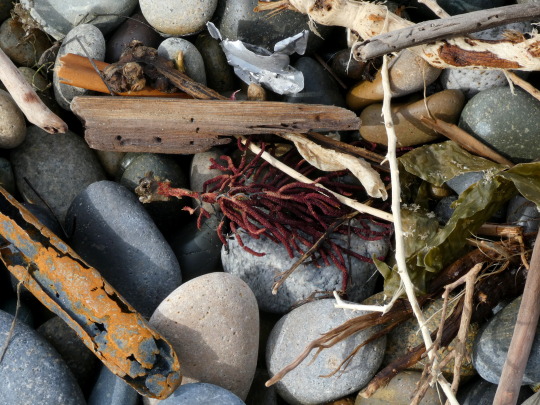
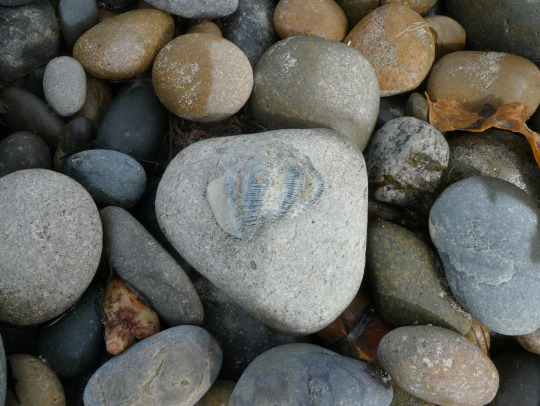


beach stuff
#photography#animals#coral#whelk#kellet's whelk#sea cucumber#sweet potato sea cucumber#piddock#mussels#california mussel#mollusks#bivalves#seashells#nature
4 notes
·
View notes
Text
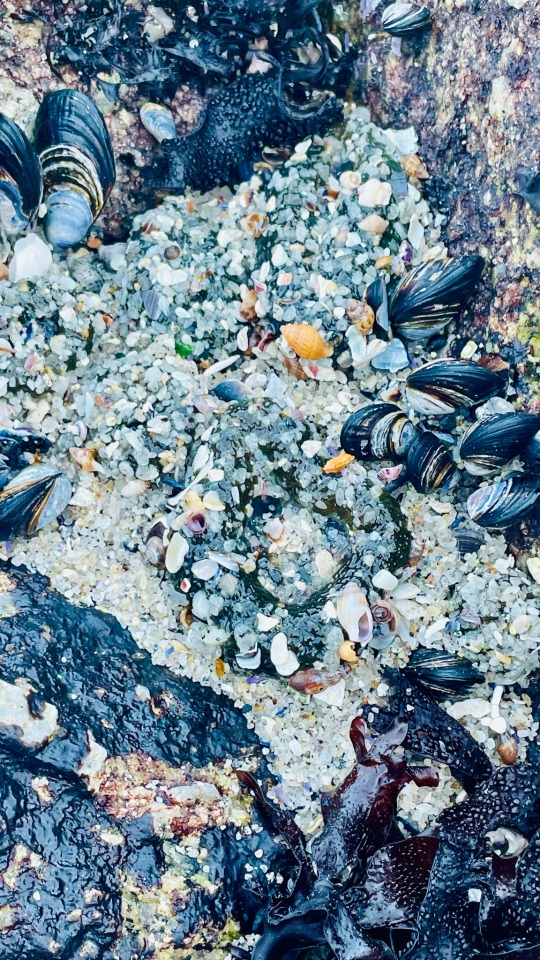
Looking closely at the mussels and mini sea shells 🌊🐚
#beach#colorful#seaside#discover#pacific#california#montereybay#mussels#oceanography#rocks#white sand#south bay#travel#seashells#pacific grove#aquatic#sea life
25 notes
·
View notes
Text








Usal Intertidal Guide – 004
Usal Guide 004: a guide to the alien-like world of California tide pools. "It's advisable to look from the tide pools to the stars and then back to the tide pools again." Curated by Usal Tidepooling guide Parker Kalan with words collected by Usal. 100 limited edition brochures printed and published in Los Angeles, CA.
#usal project#usal#intertidal guide#california#tide pools#parker kalan#los angeles#michael washington#purple urchins#striped shore crab#ochre sea star#giant green anemone#bat sea star#california sea mussel#california two spot octopus#opalescent nudibranch
12 notes
·
View notes
Text

Is this why they call this part of Venice Beach Muscle Beach? :) #VeniceBeach #MuscleBeach #mussels #watercolor #beach
2 notes
·
View notes
Photo

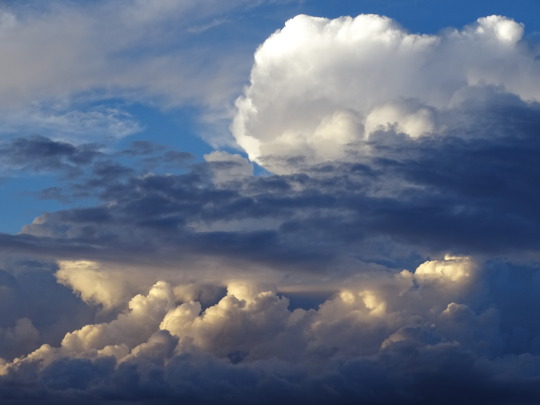



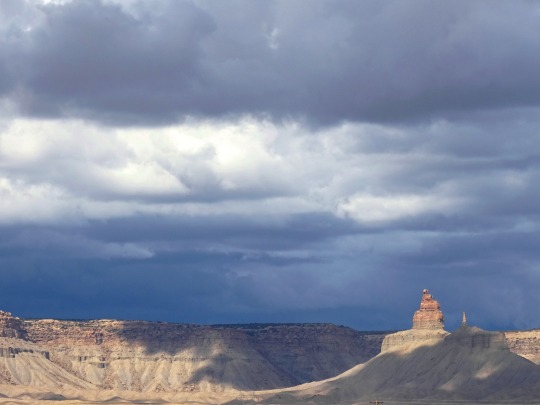

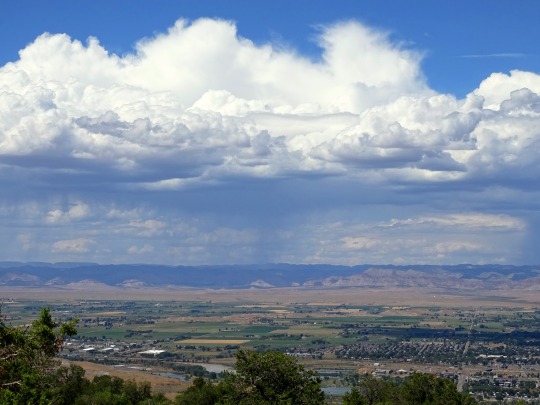


National Weather Observers Day
National Weather Observers Day is on May 4. With their observations and weather reports, many people assist the National Weather Service to achieve its purpose of preserving life and property. SKYWARN, Cooperative (Co-Op) Observers, CoCoRaHS (Community Collaborative Rain, Hail, and Snow Network), and the general public are all part of this network.
History of National Weather Observers Day
Alan Brue, who studied psychology at the State University of New York, invented the day on May 4, 1989. This day was developed for weather amateurs and professionals to honor their passion for the weather. Every year on May 4, this day is commemorated for those who enjoy viewing different weather phenomena.
With their sightings and weather reports, many individuals and groups assist the National Weather Service in fulfilling its objective of protecting people and property.
As a volunteer, you can be a part of the CoCoRaHS Observers Team, which is available to anyone ready to work on measuring and mapping precipitation. In this program, you will receive all of the necessary equipment and training on how to measure and map precipitation and how to prepare reports.
It’s simple to set up; get a rain gauge, hang it outside during the rainy season, check the rain in the gauge, and report your findings on the National Weather Service’s website.
The major goal of this day is to emphasize the importance of professionals who work in weather services 24 hours a day, seven days a week, to warn people about approaching storms and other weather changes. A thousand weather observations are made every day by weather spotters and weather stations all around the world.
These observations give crucial information that warns the public about impending storms from all three locations; land, sea, and air. They also aid in a better understanding of weather events and the analysis of historical data.
National Weather Observers Day timeline
650 B.C. Weather Prediction Using Cloud Patterns
The Babylonians use astrology and cloud patterns for weather prediction.
1835 Modern Era of Weather Forecasting
The invention of the telegraph ushers in modern-day weather forecasting.
1859 Weather Forecasting is Introduced
Fitz Roy develops charts to report weather phenomena he describes as “forecasting weather,” thereby inventing the term ‘weather forecast.’
1989 National Weather Observers Day is Created
Alan Brue creates National Weather Observers Day on May 4.
National Weather Observers Day FAQs
What do weather observers do?
A weather observer collects, records, and maps weather conditions, both good and bad. Observers need to be willing to gather weather information in the rain, blinding heat, and other extreme conditions.
What equipment do weather observers use?
Observational data is collected using buoys, radiosondes, doppler radar, and weather satellites, among others. The data is fed into the N.W.S. forecast models that use present and past weather information to develop forecast guidance for meteorologists.
How is weather data used?
Climate and weather data are utilized in different ways. Decision-makers in towns and cities use this information to plan for extreme weather conditions, water management, and even energy needs.
National Weather Observers Day Activities
Sign up for a weather spotter’s course
Play a prediction game
Make your very own barometer
If you have a passion for observing weather phenomena, you should take a course for Weather Spotters. These courses teach everything from identifying clouds to tracking shifting weather and so on.
Play a prediction game with friends and family where you all try to predict the weather for the next week and see who is right. The winner can get a gift, and everyone gets to sharpen their weather-watching skills.
Making a barometer is an excellent way to spend Weather Observers Day. It can be put together quite easily using a few materials around the home. Look up tutorial videos and get to work!
5 Important Facts About The Weather
Amateur league
Incoming
Judge of the skies
Blinding speed
Doing the numbers
There is a group for amateur weather enthusiasts called the Association of American Weather Observers.
Storm spotters came to the fore during WWII, alerting fighting forces of incoming lightning.
Honorable William Rehnquist, the U.S. Supreme Court’s former Chief Justice, was a weatherman.
Raindrops can reach a maximum speed of 18-mph.
The first-ever mathematical weather forecast lasted six hours and took about six weeks to calculate.
Why We Love National Weather Observers Day
Weather predictions save lives and property
We get to learn a lot
Appreciation for weather people
The National Weather Service’s vision is to use the weather observations and reports to protect life and property. Without these timely bits of information, storms and other weather phenomena would wreak even more havoc.
Weather observation gives us valuable insight into the peculiarities of different weather phenomena. We get to explore and gain more understanding, enjoying nature in all its magnificence.
National Weather Observers Day is dedicated to all the players that contribute to the amazing work done by the National Weather Service. On this day, we get to show our appreciation for their work that often goes unnoticed.
Source
#Luzern#Lucerne#Monument Valley Navajo Tribal Park#Book Cliffs#USA#Grand Valley#Freemark Abbey Winery#Daly City#Mussel Rock Park#Morro Bay#fog#sun#rain clouds#original photography#travel#vacation#summer 2022#Colorado#Arizona#California#Switzerland#landscape#National Weather Observers Day#4 May#NationalWeatherObserversDay#tourist attraction#landmark#sky#clouds#seascape
14 notes
·
View notes
Text

Malibu 2020
2 notes
·
View notes
Text
Per the University of California, Berkeley, a mussel's foot secretes thin, hair-like strands of liquid proteins, called byssal threads. These byssal threads anchor the animal to the surface of its choosing.
These creatures make a mixture of proteins, which have a unique chemical group called catechol. "It introduces a type of cross-linking chemistry that you don't get with normal proteins," Wilker continued. "We took some compounds that have some of the chemistry we see in the sea creatures, and we added that to the system."
The researchers also took the petroleum-based epoxy compound and substituted in epoxidized soy oil, as soy oil is "one of the most widely produced sustainable organic materials," according to Wilker.
Though Wilker was careful not to make promises, he relayed that this innovative glue system has an fairly low environnmental footprint.
13 notes
·
View notes
Note
blinks at you with my biggest eyes,,,pls tell me your sea otter knowledge (said by a river otter :])
Ohhh ym god youre one of my favorite beings already,, anyways so!!!
Sea otters aka Enhydra Lutris are members of the mustelidae family, as you probably know, which includes animals such as otters, weasels, wolverines and more, sea otters are typically separated into two distinct sub-species, northern sea otters enhydra lutris kenyoni (found in the waters around south alaska, washington state and british columbia) and southern / california sea otters enhydra lutris nereis (found in the waters off the coast of california),,
Northern sea otters
Length : 1 to 1.6 metres long
Weight : up to 32 kg (females) and 45 kg (males)
Southern sea otters
Length : 1 to 1.2 metres long
Weight : up to 23 kg (females) and 32 kg (males)
All sea otters
Diet : sea urchins, crabs, clams, mussels, octopus, fish and other marine invertebrate
Predators : sharks, seals, wolves, killer whales, brown bears, even eagles!
Lifespan : 10 to 15 years (males) 15 to 20 years (females)
Gestation period : range from 4 to 9 months, averaging 6 months.
How many young : sea otters only usually give birth to one pup at a time
Group of this animal is called : a raft!
Population : over 130,000!
Status : endangered
Fun facts
Sea otters have no blubber to keep them warm! So they instead have the thickest fur of any mammal,, well ever! It keeps them warm and buoyant.
They can spend their entire lives out at sea without hauling out going on land
They are one of the only other animals found to use tools (rocks) to help with opening food and other things.
They have a little pouch in their underarm where they keep a rock they use all the time, kind of like their favorite rock ^_^
Sea otters often sleep in single sex groups where they all hold onto eachother and/or wrap themselves in kelp to prevent them from drifting away in the current.
I have more things to say i just- words arent working anymore but hey!!! Enjoy the little infodump >_<
#navia yaps#someone put me down#i got that sea otter autism for real#all hail sea otters#!!!#sea otter special interest#i fuckimg love sea otters guys
5 notes
·
View notes
Text
The food served at Basque restaurants in the US equally fascinates and horrifies me: pinto beans without sacramentos, pickled tongue (an icon in euskoyankee cuisine), salad with a strange dressing and fresh cheese (yes, that white thing), chips, spaghetti, green beans and more unknown things.
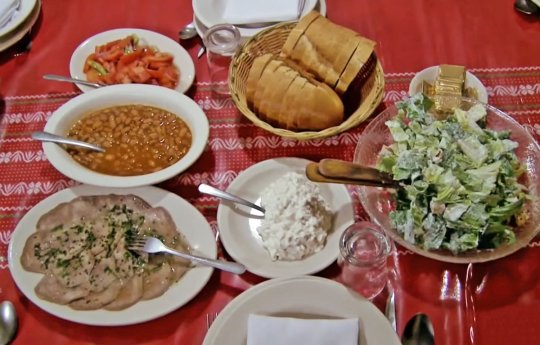
It’s side dish paradise. A festival of “create your own dish”. And you can’t identify anything on the table despite it being “authentic Basque cuisine”:

It fascinates me how the meaning of the same signifier (Basque cuisine) changes depending on circumstances and environment. For the Americans of Basque origin this - and not any other thing, not the Basque cuisine from here [EH] - is the cuisine that defines their ethnic identity. How not to love them, if they offer you rice with mussels as Basque-ness heaven 😍
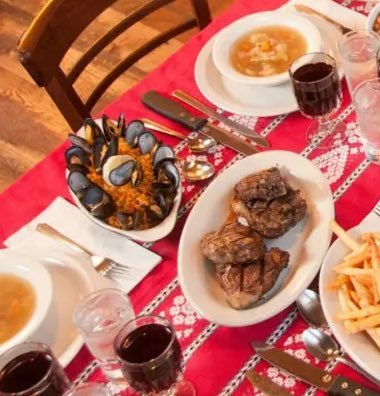
The truly magical aspect of Basque-American cuisine is that it was developed to adapt to the available ingredients (much meat, few fish) and to the more and more americanized taste of their fellow diners. It was need what brought them away from the culinary canon of their homeland. Don’t tell someone from Bakersfield, Reno or Boise that what they eat isn’t a true Basque recipe because they will hit you. As they should.
Their concept of identity, of what’s traditional or super Basque is as valid as our own. A big part of the Basque women that created the Basque-American recipes arrived in America from a rural and poor place. Their food references didn’t include anything fancy or some dishes that were created at the beginning of the 20th century that eventually succeeded here, like cod pil-pil. They moved to the US out of need and they used to live like this:

Other euskoyankee recipes came directly from shepherds, men with few or no cooking experience but that were very hungry. They had to live alone with the only help of a pot and a fire. Basque shepherds invented a unique breakfast - bread, cheese and honey, mixed with boiling hot coffee - that was talked about in the Californian press in 1929:

They also made popular the so-called sheepherder bread, that’s still a classic in California and that they would make in an iron pot. Shepherds would get up in the early morning, make the dough with some saved yeast, and let it rise while they got ready to work. Later, in a hole digged in the ground, they would put some red hot coal and then an iron pot with the dough in, and covered it with the lid, more coal and dirt. When they came back from work, their bread was ready and still warm. This type of bread is completely unknown in Euskadi, but it’s an icon of Basqueness in the US. There are even competitions.

Another characteristic of euskoyankee food is more how it’s eaten, and not what. The first Basque restaurants in the US were dining areas inside hostels, with a fixed menu and a communitary style. Long tables, everyone eating the same. Just like when we go to a sagardotegi.

For a fixed price you get soup, salad, the famous pickled tongue, pasta, cheese, salsa (Mexican style), bread, wine and a main dish that changes everyday: lamb stew, oxtail, sweetbreads, fried chicken, etc. Is this what we understand as Basque cuisine? Of course not, but it isn’t less authentic than ours. Here our food tradition evolved in one way, and there, in another. We are nobody to put labels or to believe we are guardians of anything. It’s even possible that some Basque-American recipes are older than many we consider a classic and super traditional on this side of the Atlantic. Let me remind you that the old Basque cuisine was extremely simple and humble.
Original Twitter thread by Basque journalist and foodie Ana Vega
#euskadi#euskal herria#basque country#pais vasco#pays basque#basque diaspora#usa#basque people#food#food history#interesting#tradition#identity#culture
210 notes
·
View notes
Text
Excerpt from this press release from the Center for Biological Diversity:
The Center for Biological Diversity today secured court-ordered deadlines from the U.S. Fish and Wildlife Service for final endangered species protections for 10 species, critical habitat designation for three, and decisions about whether protections are warranted for two. The species live across the U.S., from the Southeast to Texas and New Mexico and the West Coast.
“We’re suffering an extinction crisis that threatens to undermine our way of life, so I’m relieved these 15 remarkable species will get the protections they so badly need,” said Noah Greenwald, endangered species director at the Center. “From burly alligator snapping turtles to cute but ferocious martens, these are some of my favorite species and it would just be so tragically sad if we lost them.”
The alligator snapping turtle found across the Southeast, Suwanee snapping turtle which is a distinct species found in the Suwannee River in Florida and Georgia, the Washington’s Mount Rainier white-tailed ptarmigan, New Mexico’s least chipmunk and six species of Texas mussels will all receive final endangered species protections by the end of the year.
Humboldt martens in California and Oregon, a Tennessee fish called the Barrens topminnow, and the Pearl River map turtle, which lives in Mississippi and Louisiana, will all receive designations of protected critical habitat.
The Northwest’s tall western penstemon flower will get a protection decision by September 1, 2026 and Nevada’s Fish Lake Valley tui chub fish will get a protection decision by May 17, 2025.
Despite the accelerating pace of wildlife loss in North America and across the globe, the Service has been chronically slow at providing Endangered Species Act protections to imperiled species, averaging new protection for just 14 species per year over the last three years despite hundreds waiting for protection.
On April 17, 115 groups asked Congress to increase funding for endangered species threefold — to $857 million — including $70 million for listing species. While lack of funding is part of the problem, there’s also a lack of political will at the agency to carry out its regulatory duties required under the Endangered Species Act.
10 notes
·
View notes
Text
MSB rambles: locations
As anyone who’s watched the Magic School Bus series knows, the show is mostly set in Walkerville, a made-up town. However, they never specify where it is, except for “in the USA.” They don’t specify what state, or even what region of the country it’s in. But here are my observations.
In “Gets Eaten,” Ms. Frizzle drives the class to the beach, while the bus is in normal bus mode. The beach looks like a California beach to me (based on my experience going to beaches there), and a sea otter makes a brief appearance. In the US, sea otters are only found along the west coast.
In a few episodes (Getting Energized, Rocks and Rolls, etc…), it’s shown that there are mountains/foothills just outside Walkerville, and that there’s snow on top for at least part of the year.
We know it snows during the winter in town as well. (Source: MSB Holiday Special)
There is a swamp with alligators and blue jays within driving distance of town, as shown in “Butterfly and the Bog Beast.” The whole vibe of the swamp feels very southern to me. (Note: “driving distance” might not necessarily mean said swamp is near town. Could just be that anywhere is driving distance on the Magic School Bus.)
In “Gets Swamped” we see that there is a more marshy swamp in town. The main vegetation is reeds and small shrubs, and the animal life consists of species such as snapping turtles, muskrats, wood ducks, harriers (marsh hawks), bullfrogs, red-winged blackbirds, and dragonflies. This suggests a more northern location for Walkerville.
In “Goes to Mussel Beach,” the mussels are described as “Mytilus californianus” aka the California Mussel, a species only found along the west coast. Again, we have no idea how far away the beach is from town, but it’s a different beach than the one in “Gets Eaten.”
In “Kicks Up a Storm” the outside temperature gets to a high of 99 degrees Fahrenheit— which, judging by the kids’ reactions, is too hot for them. As a Californian, I can sympathize with this.
In “All Dried Up,” the bus (in plane mode) must fly over a mountain range to get to what looks like the Sonoran Desert. Which mountain range they fly over is not specified.
In the book “The Truth About Bats,” it is stated that in order to see bats in Yosemite National Park, the class must fly to California— thus implying that Walkerville is not located in my home state.
In “Goes to Seed,” there is a Ruby-throated hummingbird (at least that’s what I think it is) in the garden at Phoebe’s old school. The Ruby-throated hummingbird lives mainly in the eastern half of the US.
In “In a Beehive,” Tim mentions a “big frost” approaching. Again, this suggests Walkerville is somewhere Up North. (We don’t get a “big frost” where I live— just a few smaller frosts.)
In “In the City,” we see that some of Walkerville’s urban wildlife includes peregrine falcons, red foxes, opossums, raccoons, and nighthawks. It is also implied that bears live in the woods outside of town.
In the book “The Wild Whale Watch,” the New England coast is a short drive from school, which directly contradicts my observations about coastal locations in the show.
The woodpecker in “Meets the Rot Squad” is a red-bellied woodpecker, a species found in the eastern US.
In the book “Rocky Road Trip,” Carlos says that he collected some of the rocks in his collection near “the Saddle River.” I looked it up, and in the real world, Saddle River runs through New York and New Jersey. (But for all we know, the Saddle River in the book could be made up just like Walkerville.)
In “Ups and Downs,” we see that Walkerville is located near a good-sized lake— large and deep enough for a submarine to dive in, and with plenty of underwater vegetation.
In terms of continuity, there is no continuity when it comes to where the heck Walkerville is. This sometimes frustrates my overanalytical brain. So, I leave it to you, fellow Magic School Bus fans, to answer the question:

Map for reference!
14 notes
·
View notes
Text
We saw five California two-spot octopuses at the Abalone Cove tide pools today! Met Mike a friendly skateboarder from Koreatown who is the #2 iNaturalist identifier for the area. In the video above he’s trying to feed our octopus friend a mussel when said friend got frisky. I was totally in raptures, making contact with the sublime consciousness of cephalopods!
Here I am, mesmerized by the proverbial pools of life…










California cruising music for the sentimental stage of the journey:
youtube
65 notes
·
View notes
Text


















[Image ID: Set of 18 pictures. The first is the ocean by the edge of a rocky shore, with many fluffy clouds in the blue sky. The next 16 are various aquatic creatures, the IDs of which are listed below. The last is the ocean and tidepools at sunset, which is turning the sky pale orange and yellow. /End ID]
a day at the tidepools, -0.012 m
top to bottom, left to right: juvenile shrimp and hermit crabs (likely red-banded transparent and blueband, respectively), woolly sculpin, snowy egret, spotted sandpiper, western gull, gooseneck barnacles and California mussels, striped shore crab, California spiny chiton, sandcastle worm, juvenile zebra perch, owl limpet with acorn and volcano barnacles, fish (possibly topsmelt silverside), juvenile garibaldi, juvenile opaleye, black sea hare, California moray eel
2 notes
·
View notes
Text
One broken wind turbine blade shut down Massachusetts beaches. What would hurricanes do?
By Paul Driessen
August 27, 2024
Photos of oil-covered seals and birds from California’s 1969 Santa Barbara blowout helped launch the environmental and stop-oil movements. Some 90,000 barrels polluted ocean waters and yet, when I was scuba diving beneath it two decades later, the same production platform support structure once again hosted a magnificent ecosystem with millions of anemones, mussels, starfish, crabs and fish.
The 2010 Deepwater Horizon drillship disaster killed eleven workers and blasted 3-4 million barrels of oil and enormous amounts of natural gas into the Gulf of Mexico. Yet within a surprisingly short time after the runaway well was capped, wave action, oil-dispersant chemicals, dust-covered oil droplets slowly sinking to the seafloor, and other natural forces had cleansed the waters of oil.
Those other forces were hydrocarbon-degrading microbes that are always present in ocean waters worldwide – but rapidly reproduce when they sense oil in their environs. After depleting the hydrocarbon food sources, the microbes die off to normal numbers, and new organisms degrade the byproducts the initial foragers created, until those nutrients are also gone. Then their populations also plummet, in a newly clean ocean.
The disasters spurred industry to implement better blowout prevention technologies and procedures.
Irrelevant, anti-oil activists say, they also emphasize why we must banish oil and gas – and replace fossil fuels with clean, green wind, solar and battery power. Otherwise, wildlife, beaches and tourism will be threatened repeatedly by oil spills.
2 notes
·
View notes
Text
we're very. torn between wolf and coyote right now.
we're a coastal wolf, because that's what we've always been, because that's what we'll continue to be. because we're always going to yearn for the coasts, for the feeling of a freshly caught salmon lodged in our jaws. for the feeling of cold sea water rushing around us. for the feeling of cracking open mussels and clams and crabs to get at the soft meat (even if our shellfish allergy would kill us, lol). as much as we love them, we want to feast on the soft flesh and fat of the harbor seals and California sea lions.
the coyote is newer. fresher. but at the same time, it's an old open wound that we've ignored. we've been a coyote before, and a coywolf. and it's strong, it's in the forefront, taken over the wolf in a way--coyotes can be opportunistic, so i guess i can't really say it's unexpected that, in a time when we've been questioning our wolfishness, the coyote would take over. bring a sense of stability that the wolf, in this time, struggles to provide.
we've been a coyote for a few days now. the wolf is still there, lingering in the background with the dog. (this definitely isn't the "order of operations" we went through last year as our common species shifted, although we're still thinking the wolverine will appear sometime in November, December, or January for the cold months.) at the moment, we're just trying to settle into an unfamiliarly familiar form. to some degree, we've been trying to ignore it in hopes that we'd go back to being primarily a wolf--but obviously, that hasn't exactly worked. so there's not exactly any option other than just... acceptance.
#yips from yonder#clinical lycanthropy#clinical zoanthropy#holothere#being a shapeshifter is deeply annoying sometimes
3 notes
·
View notes